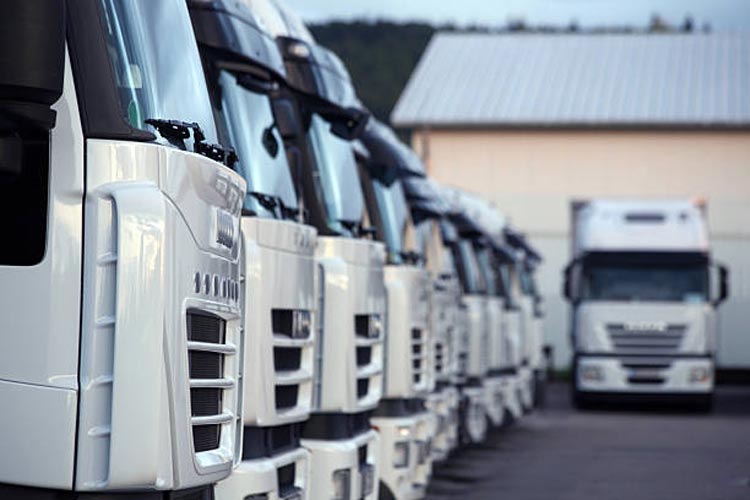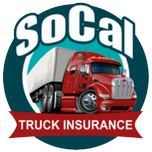
What the Advanced Clean Trucks (ACT) Regulation Means for Your Fleet
In 2020, the Advanced Clean Trucks (ACT) rule was unanimously adopted by the California Air Resources Board (CARB), making it the world’s first zero-emission commercial truck requirement. This may also have an effect on acquiring cheap truck insurance for the fleets as well.
The rule aims to cut toxic fossil fuel emissions in polluted communities throughout the state and thus requires truck manufacturers to make and sell clean, zero-emission trucks in place of dirty diesel and gasoline trucks.
This is great news for the communities near freeways, ports, and freight hubs, with whom this rule is primarily made. The people in these communities, which are predominantly minorities and low-income individuals, suffer from harmful air pollution disproportionately, as they have to deal with more than 1,000 diesel trucks rumbling through their neighborhoods per hour.
This led to residents getting high asthma rates and heightened cancer risks. The problem is so bad and so prevalent that doctors are calling these areas diesel death zones.
But what about those who are required to follow this regulation? As a fleet owner, how will ACT affect your business and operations?
What is the Advanced Clean Truck Regulation?
First, it’s necessary to know what ACT is exactly and its specifics. The regulation aims to accelerate a large-scale transition of zero-emission medium and heavy-duty vehicles from Class 2b to Class 8.
There are two components to this regulation, which include requirements for manufacturer sales and reporting.
Truck makers who certify Class 2b-8 chassisThe wheeled frame used for transporting intermodal containers, often included in trailer interchange... or complete vehicles with combustion engines have to sell zero-emission trucks as part of their increasing annual sales in California from 2024 to 2035.
Zero-emission truck or chassis sales have to be 55% of Class 2b-3 truck sales, 75% of Class 4-8 straight truck sales, and 40% of truck tractorA powerful motor vehicle designed primarily to pull trailers in commercial trucking operations. sales—all by 2035.
Also, major employers, which include retailers, manufacturers, and brokers, will have to report information about their shipments and shuttle services. Fleet owners who operate 50 or more trucks have to report about their existing fleet operations. The information from these data will help identify future strategies to make sure that fleets buy available zero-emission trucks and use them whenever suitable to meet their needs.
Trucks that are suitable for electrification are electric drive-trains that operate best in congested urban areas. Electric ones are more efficient at this type of stop-and-go driving compared to conventional engines.
Fleets are already using battery-electric and fuel-cell electric trucks, buses, and vans for local operation. The operators also know the usual daily use pattern of these trucks where they return to base—to be fueled or recharged.
Impact of the Trucks ACT on Fleet Owners
On top of securing commercial truck insurance California, the cost of transition is certainly the major consideration when it comes to implementing regulations such as this. Compared to conventional trucks, zero-emission trucks have higher upfront costs but have lower operating costs.
Currently, the total cost of ownership of zero-emission trucks in California can be compared to conventional trucks when it comes to certain duty cycles without grants or rebates.
The total cost of ownership is expected to become more favorable to fleet owners as battery prices fall and technology continues to improve. Also, there are incentives available at the moment to offset some or even all of the higher vehicle capital costs, and at least part of the early infrastructure cost. This will certainly help fleets to start transitioning to zero-emission vehicles.
It’s no surprise that there are those who are skeptical about the regulation. One example is the City of Long Beach, which has more than 400 trucks that will be affected by the rule. This does not include trucks associated with the water and harbor departments, which are not managed by the Long Beach Fleet Services Bureau.
The city’s interim director of financial management, John Gross, said that the legislation is “likely to be simultaneously transformative, tremendously expensive, and potentially disruptive.”
A gross estimate shows that the rule could end up costing Long Beach $1.5 million per year starting in 2024. Around $500,000 of those annual expenses will be coming from the general fund.
The city would also require $10 million in one-time costs to spend on heavy-duty charging stations. About half of those costs would come from the general fund as well.
How ACT Will Change the Landscape of Clean Fleets for 2021
The regulation will certainly change the landscape as supported by the following reasons:
- Clean trucks and buses are raising the competition – clean fleets increasingly perform well on the crucial metrics for fleet managers in terms of range, the total cost of ownership, and operational performance.Reports confirmed that every long-haul, delivery, and large-scale fleet—plan to increase their use of this clean technology.
- Increasing focus on energy efficiency technologies – several original equipment manufacturers (OEMs) are working towards achieving enhanced fuel economy by making products such as tractor aerodynamics and trailer skirts for Class 8 trucks.Some manufacturers are making truck designs that show how multiple efficiency technologies can be combined to improve fuel economy dramatically.
- Expansion of renewable diesel and biodiesel usage – the production of renewable diesel (RD) saw a 7% increase in 2020 compared to the year before. Recent investments can potentially produce 3.8 billion gallons a year in the U.S. by 2025.Overall cost still remains the top challenge facing fleet owners when it comes to the adaption of the clean air rule.Before incentives, costs are usually equivalent to two to three times that of a new diesel vehicle. Batteries remain a high-expense component of the total price of the vehicle.Even though costs have been brought down over the past several years due to technological advances in electrical vehicle (EV) batteries, the finances involved are still the biggest blockade to progress.
Frequently Asked Questions:
What is the Advanced Clean Trucks (ACT) Regulation?
The ACT Regulation is a policy in the US that aims to accelerate the adoption of zero-emission vehicles in the medium and heavy-duty truck sector.
Who does the ACT Regulation apply to?
The ACT Regulation applies to fleet owners and operators of medium and heavy-duty trucks in the US.
What are the key requirements of the ACT Regulation?
The ACT Regulation requires fleet owners to gradually transition a portion of their vehicles to zero-emission trucks over time, based on specific milestones and targets.
What are the benefits of complying with the ACT Regulation?
Complying with the ACT Regulation can result in various benefits, including reduced greenhouse gas emissions, improved air quality, and potential financial incentives or grants.
When does the ACT Regulation go into effect?
The specific implementation dates for the ACT Regulation may vary by state, but it is advisable to start planning for the transition to zero-emission trucks as soon as possible.
At SoCal Truck Insurance, You Don’t Have to Worry About Costs
Clean fleet or not, you still have to get insurance for your trucks. SoCal Truck Insurance is the name to trust in California when it comes to the best policies and services in the market.
We offer the cheapest commercial customized and fast truck insurance coverage for your particular insurance needs, with policies that provide you with all of the protection you need for one low price.
If you want to learn more information about fleets, take a look at our article about the 3 things your fleet needs to have.
Get a free quote, contact us at SoCal Truck Insurance today.


